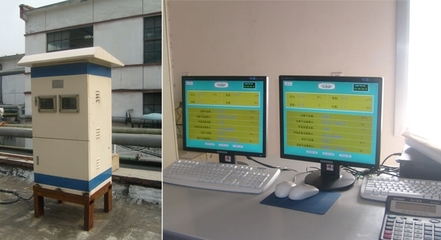摘要:在企业社会责任推行是否需要良好企业管治配合的争论日益增长的时期,威理夫教授详细地分析了亚太地区企业管治对于企业可持续性发展,推行企业社会责任的重要性,以及在各地区的企业管治的特点。
Corporate Governance in Asia
An increasingly important part of debates surrounding CSR practices revolves around the need for good corporate governance in the Asia-Pacific region. It is clear that a weak institutional framework for corporate governance is incompatible with the sustainable development of an economy and that poor governance is a barrier to inward investment. Good governance has to be seen as important therefore to the development of all economies, but particularly emerging markets in the region. Therefore, promoting improved corporate governance along with CSR practices is an important part of ensuring development is in the interests of more than just a dominant minority.
Good corporate governance increases investor confidence and there is evidence that suggests that where companies introduce good governance practices, share prices rise. But corporate governance is also about creating beneficial relationships with all stakeholders, including shareholders, creditors, employees and the wider community and environment. This two-part article seeks to review corporate governance issues from an Asia perspective. Ownership and control of many companies in the region differ from that commonly seen in the West and there are therefore specific issues that need to be addressed in this context.
One key characteristic about Asia is that many of the largest companies in the region are owned and controlled by major controlling shareholders. These are often inpiduals or families and sometimes the state. Controlling shareholders have strong incentives for monitoring the company and its management and can often have a positive impact on the governance of the company. On the other hand their dominance also means that they can force a company to operate in the interests of the controlling shareholders and this can have negative impacts on smaller minority shareholders.
There is therefore a potential conflict arising when dominant controlling shareholders decide to extract private benefits out of a firm to the detriment of minorities. One aspect of corporate governance important in the region is to make sure that powerful inpiduals and their families do not damage the interests of minority shareholders.
It is clear to see therefore, that poor corporate governance can be costly to minority shareholders. On the other hand, controlling shareholders can also suffer from poor corporate governance structures in the form of lower stock valuations, restricted access to equity finance and difficulties in getting credit.
Even large listed companies in Asia more often than not have a controlling shareholder. Indeed, it is estimated by the OECD that 85% are under some sort of majority control (defined as having 20% or more of the voting rights). The table below provides an overview of the situation with respect to publicly traded companies in a number of Asian locations:
It can be seen therefore that the great majority of controlling shareholders are families or inpiduals. In some cases it is the state, a financial institution or foreign multinational. In such circumstances, it is assumed that the controlling shareholder has enough votes to prevent unwanted takeovers, appoint directors and determines the outcome of a normal vote at a general meeting of the company. Controlling shareholders rarely need 50% of the vote. In most cases, in combination with “allied” shareholders and passive voters who do not vote at all, control can be exerted with 30% or less of the voting rights.But the particular situation in Asia sometimes means that controlling shareholders actually have even smaller proportions of equity than this but use a number of devices to get themselves even greater voting rights. One way of doing this is to use stock with ‘special’ voting rights which is allowed in some countries. But a more common way of gaining control over a whole group of companies is to make use of so-called ‘control pyramids’. This is best explained through use of an example.
Let us assume that a family owns 40% of a global holding company (company A). Company A then has a 40% holding in an Asia –Pacific subsidiary of that company (company B). Company B holds 40% of a particular service company (company C) and, in turn company C holds 40% of the stock of one of its contractors (company D). Since 40% is more than enough stock to effectively control a company, the family has control over this whole group. It has control over 40% of the voting power of company D, but, in actual fact only really owns only 2.56% of the stock .In Hong Kong the business empire centered around Cheung Kong and Hutchinson Wampoa owned largely by Li Ka-Shing and his family is hugely successful and enormous. A study by Stijn Classens in 2000 suggested that the Li family had 34% of the vote in Hong Kong Electric, for example, but due to an elaborate ownership structure effectively owned only 2.5% of it.
These sorts of ‘control pyramids’ are widespread. In Malaysia, the Philippines and Taiwan over 35% of listed companies are controlled with a pyramid structure. In Indonesia and Singapore, it is well over 50%. Sometimes they are very useful to bring a group of companies together under one well known brand. But this separation of ownership and control has important implications for the companies’ minority shareholders.
As noted previously, in many cases controlling shareholders have an interest in seeing a well managed company and can be effective in overseeing the corporate governance of the company. But, at other times, controlling shareholders are in a position to take actions that benefit themselves at the expense of other shareholders. The treatment of minority shareholders is therefore a big issue for corporate governance in the region. The solution is to credibly signal to existing and potential shareholders that their interests will be upheld. There are a number of voluntary ‘comply and disclose’ codes of conduct that can be adopted by companies and credibly audited. However, such codes, common in the London and New York stock exchanges, for example, have seen a much poorer uptake in Asia. It may well be, therefore, that in this region, there needs to be measures introduced that are backed up by strong legal protection. (This is further examined in the second part of this article).
There are a number of issues connected with controlling shareholders that have to be addressed through such measures. In Asia, in particular, the most common controlling shareholder is the family. This raises big issues when it comes to succession planning and the management and control of companies. When the family founder decides to step aside for example, we may see another family member take over the leadership role even when the skills and talents of that family member would normally dictate otherwise. In this case a poor governance structure means that the company might be managed by less than fully competent personnel. In addition, however, a company with poor governance might actually find it difficult to recruit professional management to run the business group.
Companies have considerable discretion about what pidends will be paid to shareholders. Shareholder buy the shares of companies looking for financial benefit in terms of both the pidend income and capital gains associated with the share price. They need assurance that fair pidends will be paid (since this also impacts on share price). Moreover, they need to know that their interests as shareholders will not be discriminated against in favour of other shareholders. In particular, it is important that controlling shareholders are not allowed to get money out of the company in other ways that suits their own interests.
One way in which this often occurs in emerging market economies is through the practice commonly known and ‘tunneling’. This is the situation where company ‘insiders’ take the assets for themselves. Tunneling comes at the expense of shareholders and other stakeholders and in the process reduces investor confidence, retards capital market development, reduces access to equity finance and ultimately slower growing and less stable economies. Like corruption, more generally, it destroys confidence in a whole economy, stifles inward investment and makes the poorest parts of society even poorer. Tunneling can be easily done by controlling shareholders who can often transfer money and other assets out of a company, benefiting themselves and harming minority shareholders, employees and local communities. These activities can severely damage a company and even lead to bankruptcy. There have been cases where controlling shareholders have intentionally “hollowed out” the company, leaving debts unpaid and workers without jobs.
There are a number of forms of tunneling that exist. The first relates to acting on privileged information for personal gain. Additional purchases of shares by a controlling shareholder or members of the family or associated businesses can be done prior to an announcement of a deal that will send the share price higher. Such insider dealing is illegal in many Asian countries but many see it as prevalent and largely unchallenged.

 爱华网
爱华网


